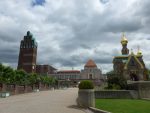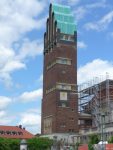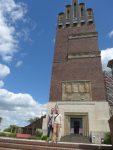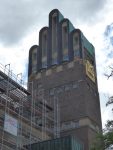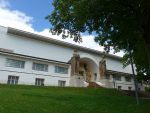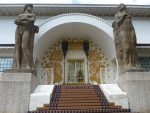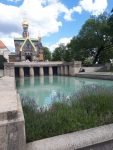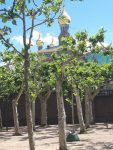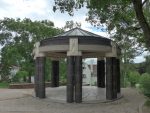The Darmstadt Artists Colony is one of the world’s most important assemblages of art nouveau buildings, or as it is called in Germany, Jugendstil (“youth style” which got its name from an art magazine founded in 1896), consisting of exhibition halls, artist’s houses (mansions, really), a tower and various park features built from 1901 to 1914 on a hill in the western German city of Darmstadt. The architects were some of the era’s greatest such as Peter Behrens and Joseph Maria Olbrich of the Vienna Secession movement. They and the artists also designed objects such as furniture, ceramics, glassware, and printed matter and one of their principles was to integrate all the diverse media. They carried this out in the form of multidisciplinary exhibitions and built projects, most of which didn’t survive World War II or just changing tastes, such as cafes where they designed everything from the china and menus to furniture and wallpaper.
The whole thing was sponsored by a duke and the tower was just to commemorate his wedding. Each floor has one little room – top floor for visitors and receptions; lower floors for a marriage chamber and a registry office.
The surrounding grounds have a fountain, pavilion, tree plaza and so forth. Also there is an incongruous and unrelated Russian orthodox church which a czar built a couple years prior so he would have a place to pray when he visited. The site is under consideration for UNESCO World Heritage status.
Continue reading “The Art Nouveau artists’ colony at Darmstadt”
